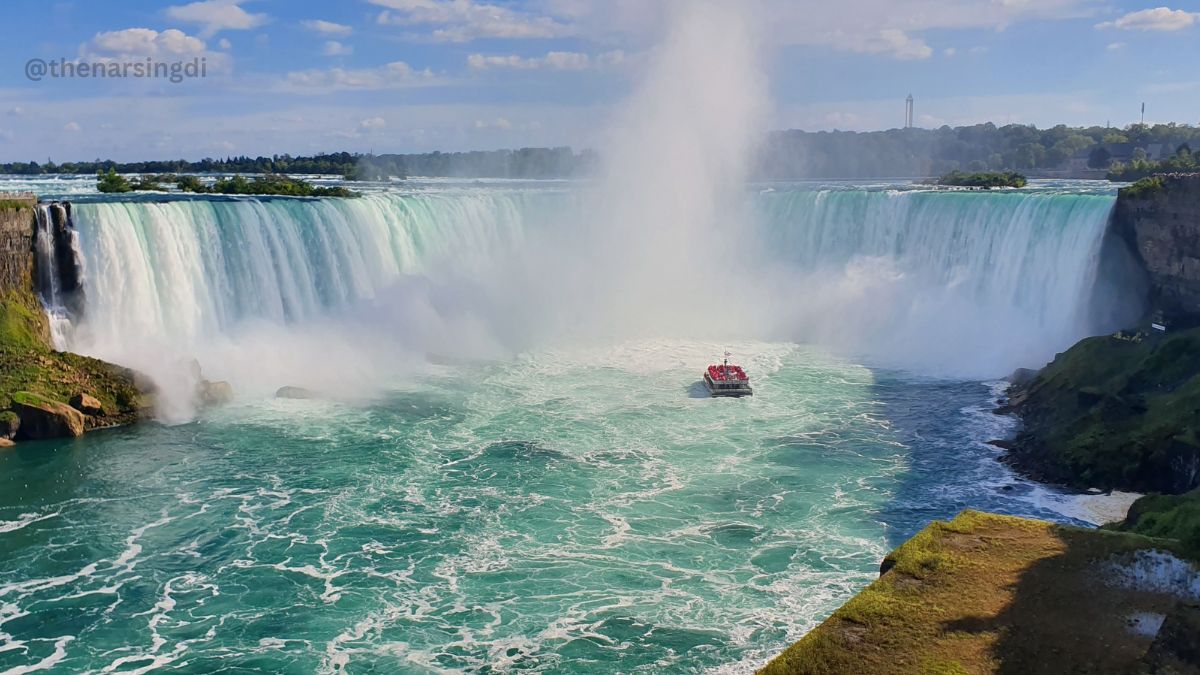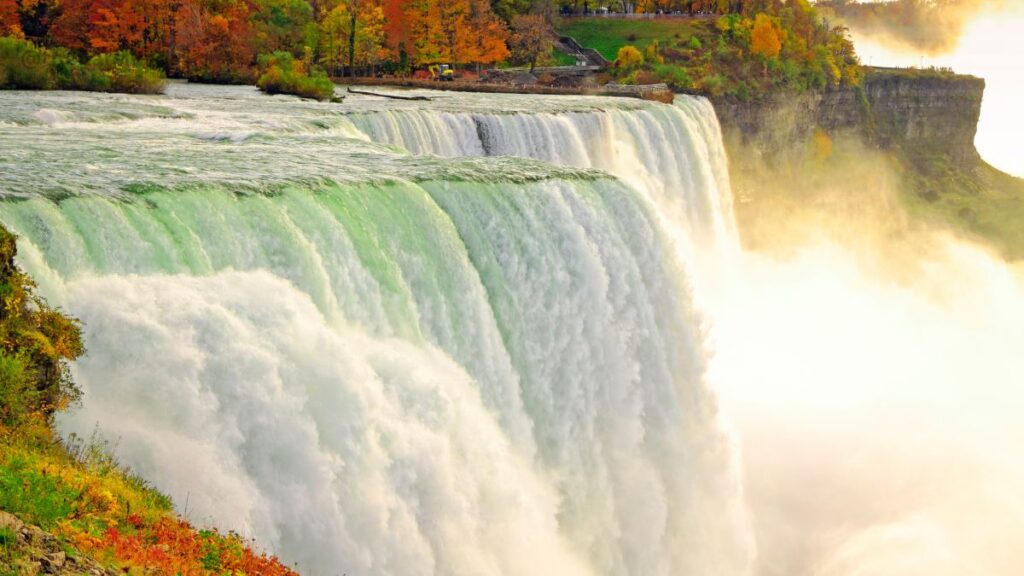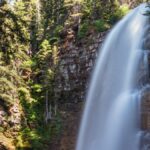Where is the niagara falls? Spreading over the line among Canada and the US, Niagara Falls isn’t simply a solitary fountain; it’s a triplet of glorious cascades — the Horseshoe Falls, American Falls, and Wedding Shroud Falls. These natural wonders flow between the vibrant cities of Niagara Falls, Ontario, and Niagara Falls, New York, creating a breathtaking panorama that mesmerizes millions each year.
In this blog, we’ll pinpoint Niagara Falls’ exact location, explore the unique features of each waterfall, and offer insider tips on making the most of your visit.
History of Niagra Falls:
TOC

Niagara Falls, a colossal masterpiece of nature, boasts a history as grand as its cascading waters. Let’s embark on a captivating journey through time to uncover the story behind this world-renowned natural wonder.
- The Birth of a Giant
The story of Niagara Falls begins over 12,000 years ago, at the last part of the last Ice Age. As massive glaciers retreated, they sculpted the Great Lakes and carved a path for the rushing waters that would become Niagara Falls. This relentless flow of water over the Niagara Escarpment sculpted the dramatic falls we marvel at today, with the Horseshoe Falls shifting upstream due to its constant erosion.
- Sacred Grounds
Long before European explorers arrived, Niagara Falls was a revered site for Indigenous peoples such as the Haudenosaunee (Iroquois) and Anishinaabe. For these communities, the falls were a symbol of spiritual power and natural grandeur, woven deeply into their cultural and spiritual fabric.
- European Discovery
In 1678, French explorer Father Louis Hennepin stumbled upon Niagara Falls, forever changing its destiny. His vivid accounts introduced the majestic site to Europe, setting the stage for a burgeoning interest in this spectacular natural phenomenon.
- The Dawn of Tourism
By the early 1800s, Niagara Falls began to captivate tourists. The establishment of early hotels and viewing platforms transformed the falls into a must-see destination. The Table Rock House, built in 1827, offered breathtaking views of the Horseshoe Falls and became a cornerstone of early tourism.
Read More: Largest Waterfall In Canada
- Engineering Wonders
The late 19th and early 20th centuries brought engineering marvels to Niagara Falls. The Niagara Power Project harnessed the falls’ immense energy, transforming it into a hub of hydroelectric power. Innovative engineering feats, including diversion tunnels and power plants, showcased human ingenuity while preserving the falls’ grandeur.
- A Modern Icon
Today, Niagara Falls stands as a symbol of both natural beauty and human achievement. It draws millions from around the globe, eager to witness its awe-inspiring flow and explore its surrounding attractions. The falls remain a bridge between ancient reverence and contemporary wonder, reflecting a legacy of splendor and innovation.
From its ancient origins to its status as a modern-day icon, the history of Niagara Falls is a testament to its enduring power and significance. As we gaze upon its majestic waters, we celebrate a legacy that spans millennia and connects us all to the timeless beauty of nature.
FAQS:
Q. where is the niagara falls?
Niagara Falls straddles the border between Canada and the United States, nestled between Niagara Falls, Ontario, and Niagara Falls, New York. It’s about 27 kilometers (17 miles) north of Buffalo, New York, and roughly 121 kilometers (75 miles) south of Toronto, Ontario.
Q. How tall are the falls?
Niagara Falls features three main cascades: the mighty Horseshoe Falls, the American Falls, and the delicate Bridal Veil Falls. Horseshoe Falls takes the lead with a drop of around 57 meters (188 feet), while the American Falls and Bridal Veil Falls each tumble about 34 meters (110 feet).
Q. When’s the best time to see Niagara Falls?
To catch Niagara Falls at its best, aim for late spring through early fall (June to September). Amid this period, the weather conditions is warm and all attractions are open. For a remarkable encounter, winter visits offer shocking ice developments and less groups.
Q.. Can you experience the falls from both the Canadian and American sides?
Yes! You can explore Niagara Falls from both countries. The Canadian side offers sweeping views and attractions like the Skylon Tower and Journey Behind the Falls, while the American side features adventures like the Maid of the Mist boat visit and the Cavern of the Breezes.
Q. Are there boat visits accessible at Niagara Falls?
Definitely! Hop on the Maid of the Mist in the U.S. or the Hornblower Niagara Cruises in Canada for a thrilling boat ride right into the heart of the falls. These tours provide an up-close look at the roaring waters and a perspective you won’t forget.
Last Call:
You already get the answer about where is the niagara falls, with a clear sense of where Niagara Falls is located, you’re ready to experience one of the world’s most breathtaking natural wonders. Bridging the gap between Canada and the United States, Niagara Falls offers unparalleled views and exciting adventures from both sides.
We hope this guide has pinpointed your journey and ignited your excitement to see Niagara Falls up close. For a treasure trove of stunning visuals and travel insights, connect with us on Pinterest. Have you had the chance to visit, or do you have any burning questions! Leave us a comment below.

Its Aliza R. Khan, a passionate travel blogger from Bangladesh. With a knack for inspecting hidden gems and sharing travel tips, I love to inspires readers to explore the world with curiosity and adventure.



